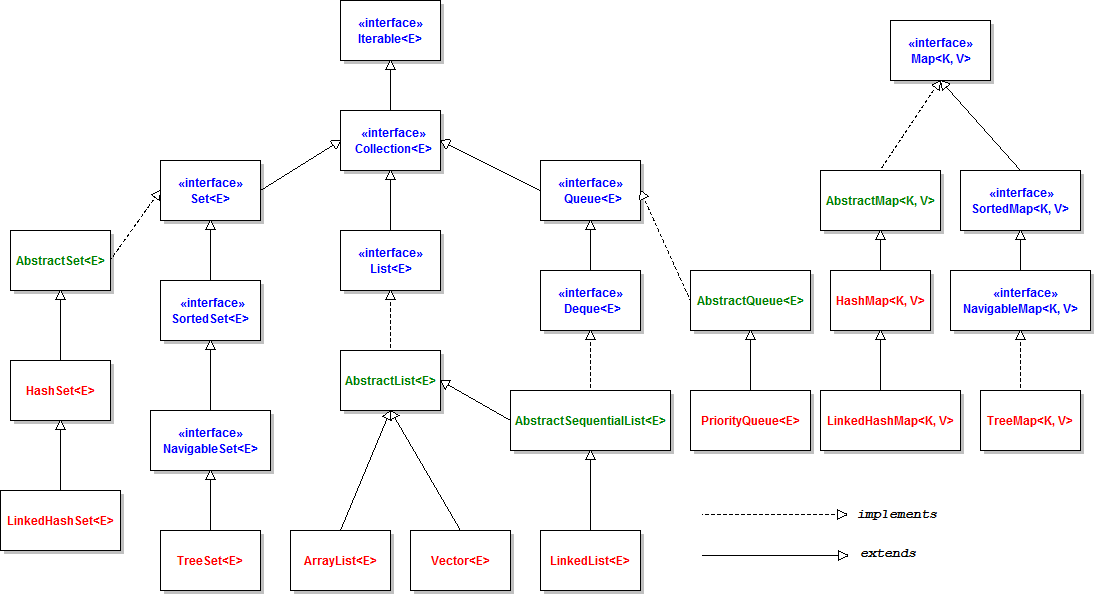Overview of Java Collections Framework API (UML diagram)
- Details
- Written by Nam Ha Minh
- Last Updated on 17 June 2019 | Print Email
The Java collections framework has a very complex API hierarchy.
The following class diagram shows a brief overview of the Java Collections Framework which is divided into four groups: List, Set, Map and Queue. Only the principal, commonly-used interfaces and classes are listed.
Class diagram of Java Collections framework
There are also more detailed class diagrams for each group:
Other Java Collections Tutorials:
- What is Java Collections Framework?
- Java List Tutorial
- Java Set Tutorial
- Java Map Tutorial
- Java Queue Tutorial
- 18 Java Collections and Generics Best Practices
About the Author:
 Nam Ha Minh is certified Java programmer (SCJP and SCWCD). He began programming with Java back in the days of Java 1.4 and has been passionate about it ever since. You can connect with him on Facebook and watch his Java videos on YouTube.
Nam Ha Minh is certified Java programmer (SCJP and SCWCD). He began programming with Java back in the days of Java 1.4 and has been passionate about it ever since. You can connect with him on Facebook and watch his Java videos on YouTube.
Comments
Boolean average(Statcomp arr) {
double sum = 0.0;
double sum1=0;
for(int i=0; i < nums.length; i++)
sum += nums.doubleValue();
for( int i=0; i < arr.nums.length; i++)
sum1 += arr.nums.doubleValue();
return (sum1==sum);
}
Then what is requirement of wildcard??
TreeSet implements NavigableSet not extends.
I think AbstractSequentialList just extends AbstractList, and
LinkedList extends AbstractSequentialList and implements List